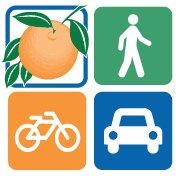Study Process
The Hancock Lone Palm Road Study follows the County’s Roadway Conceptual Analysis, or RCA, process. This process confirms the need for transportation improvements, determines the most suitable improvements for a given setting, assesses the potential impacts of such improvements on the community and the environment, includes extensive public outreach, and develops cost estimates . The completion of this process guides future project phases (design, right-of-way acquisition, if needed, and construction), which must be completed before a project is in place.
Here is a brief description of the key steps that will be used for the Hancock Lone Palm Road Study.
Data Collection
Before improvement alternatives can be developed, the study team needs to understand the existing conditions of the area as well as anticipated future changes, e.g. in development activity and transportation plans. Information is being collected from existing sources and through field reviews, which includes:
- existing roadway characteristics
- traffic and crash data
- future transportation plans
- existing and future land uses
- environmental features
- drainage patterns
- cultural resources
- potential contamination sites.
The collected information provides guidance in determining the best transportation improvement options for the Hancock Lone Palm Road corridor and the SR 50 and Waterford Chase Parkway intersections.
Corridor Analysis
Following the completion of the data collection and analysis, a review of the Hancock Lone Palm Road corridor and the SR 50 and Waterford Chase Parkway intersections will be completed to assess travel patterns, existing and projected travel demand, the presence of environmentally sensitive areas and ways to improve mobility in the Hancock Lone Palm Road area. This analysis will be documented in a Corridor Analysis Technical Memorandum.
Improvement Alternatives Identified and Studied
This step involves the identification of transportation improvement alternatives, including typical sections, that could be applied to the Hancock Lone Palm Road area. Each alternative will be evaluated based on impacts to the human environment (neighborhoods, businesses, community assets, historic resources), the natural environment (wetlands and habitat for threatened or endangered species, drainage), the physical environment (access management, right-of-way, travel patterns, potential contamination sites), and costs. The results were shared at a public community meeting on February 19, 2025.
Preferred Improvement
The preferred transportation improvement for the Hancock Lone Palm Road area will be based on the technical evaluations and public input of all the alternatives studied. The preferred improvement will be further refined and evaluated in more detail. These refinements may include estimating right-of-way limits, pond locations, costs and other major features needed to complete the study. The results will be shared at a future public community meeting tentatively scheduled for Fall 2025. Please check back for the meeting date, time, and location.
Outreach Activities
A key component of this study is the open and transparent exchange of information and feedback from stakeholders and the general public. Throughout the study, public feedback will be collected and reviewed. Individuals can remain informed about the study’s progress through this website, newsletters, and public meetings. After the second public meeting, the study recommendations will be presented to the Orange County Local Planning Agency (LPA) and the Orange County Board of County Commissioners. The study concludes with the Orange County Board of County Commissioners taking action on the study recommendations. If the recommendations are accepted, the proposed improvements will move forward into the design phase, once funding is available.
 Hancock Lone Palm Road RCA Study
Hancock Lone Palm Road RCA Study